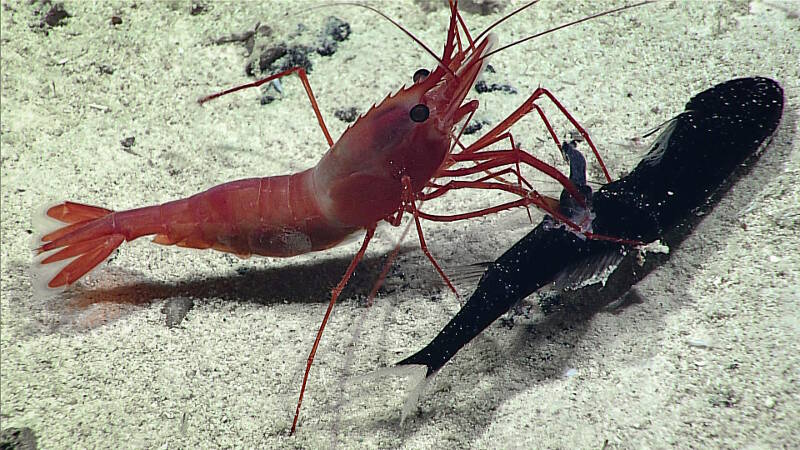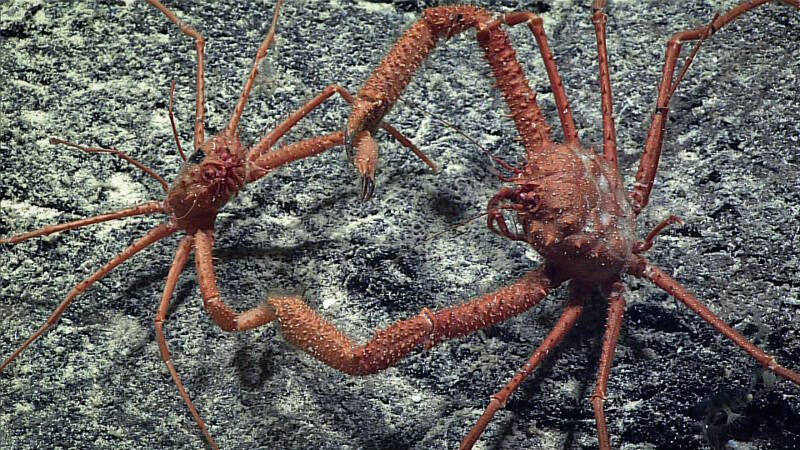The last dive of the expedition began at around 990 meters, at the base of a steep slope, at Ufiata Seamount within the Tokelau Seamount Chain. The seafloor was composed of large and small boulders, interspersed with fine sandy sediments. When an iron-manganese-coated rock was collected, the manipulator marked one of the faces, revealing a lighter color, consistent with carbonate-type rocks. The piles of boulders indicated that these might be landslide debris deposits. At the base of the slope, the fish fauna included an unknown cusk eel, cutthroat and congeriid eels, and several midwater species. Very few attached fauna were found in this area. Mobile animals like sea cucumbers, benthic siphonophores, crabs, and caridean shrimp were more common. Along the steep wall, the seafloor changed to more cracked pavement-like morphology, with thick horizontal blocks, covered with manganese iron oxide coating. The fauna was very patchy, often preferring to encrust on small manganese crust ridges than flat pavement blocks. Here, scientists observed yellow demosponges, homolid crabs holding octocorals, anemones, a two-tone cusk eel, urchins, and sponges. Corals included purple and yellow octocorals and a bamboo whip. As Deep Discoverer progressed up to the summit along the ridge, yellow sponges and white octocorals dominated the seafloor, although in low abundance. All attached fauna were found along the seafloor pavement in iron-manganese-coated cracks with fine sandy sediment. Other fauna included a rattail, squat lobsters, purple and pink octocorals (one pink sample was collected), one bamboo whip, and scleractinians. Homolid crabs and caridean shrimp were the dominant megafaunal crustaceans observed throughout the dive. Some of the shrimp were greater than 10 centimeters long. Some gelatinous invertebrates observed at or near the summit included a maroon colored jellyfish, a medusa, and ctenophores. One sea star was observed at the summit. The most impressive display of predatory behavior was observed on this dive when a caridean shrimp was impaling and consuming a midwater dragonfish while the fish was still alive. The shrimp removed several pieces of fish tissue and stomach contents. It was incredible to watch the feeding activity and the scientists wondered how this shrimp was able to capture the fish, as deep-sea shrimps are often scavengers.

